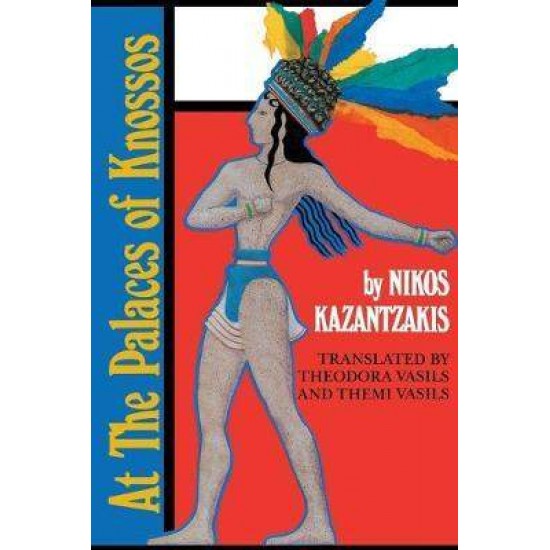AT THE PALACES OF KNOSSOS PB - NIKOS KAZANTZAKIS-THEODORA VASILS-THEMI VASILS

-8 %
AT THE PALACES OF KNOSSOS PB - NIKOS KAZANTZAKIS-THEODORA VASILS-THEMI VASILS
- Αποθήκη: 2300
- Εκδοτικός οίκος: OHION UNIVERSITY PRESS
- Κωδικός Προϊόντος (ISBN): 9780821408803
- Βάρος: 367.00g
- Συγγραφέας: NIKOS KAZANTZAKIS-THEODORA VASILS-THEMI VASILS
- Σελίδες: 219
- Κατηγορία: Μυθιστορήματα
19,46€
21,10€
Χωρίς ΦΠΑ: 18,36€
Τιμή σε πόντους ανταμοιβής: 9
"Blending historical fact and classical myth, the author of Zorba the Greek and The Last Temptation of Christ transports the reader 3,000 years into the past, to a pivotal point in history: the final days before the ancient kingdom of Minoan Crete is to be conquered and supplanted by the emerging city-state of Athens. Translated by Theodora Vasils and Themi Vasils. The familiar figures who peopled that ancient world -- King Minos, Theseus and Ariadne, the Minotaur, Diadalos and Ikaros -- fill the pages of this novel with lifelike immediacy. Written originally for an Athenian youth periodical, At the Palaces of Knossos functions on several levels. Fundamentally, it is a gripping and vivid adventure story, recounted by one of this century's greatest storytellers, and peopled with freshly interpreted figures of classical Greek mythology. We see a new vision of the Minotaur, portrayed here as a bloated and sickly green monster, as much to be pitied as dreaded. And we see a grief-stricken and embittered Diadalos stomping on the homemade wax wings that have caused the drowning of his son, Ikaros. On another level, At the Palaces of Knossos is an allegory of history, showing the supplanting of a primitive culture by a more modern civilization. Shifting the setting back and forth from Crete to Athens, Kazantzakis contrasts the languid, decaying life of the court of King Minos with the youth and vigor of the newly emerging Athens. Protected by bronze swords, by ancient magic and ritual, and by ferocious-but-no-longer-invincible monsters, the kingdom of Crete represents the world that must perish if classical Greek civilization is to emerge into its golden age of reason and science. In the cataclysmic final scene in which the Minotaur is killed and King Minos's sumptuous palace burned, Kazantzakis dramatizes the death of the Bronze Age, with its monsters and totems, and the bir








